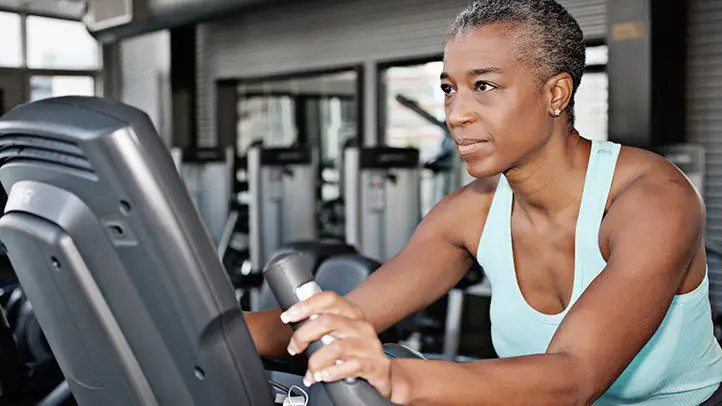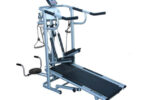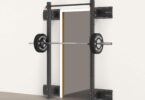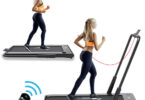The best exercise equipment to use after a hip replacement will depend on the individual’s needs and physical capabilities. For most individuals, low-impact aerobic exercises such as swimming or using an elliptical trainer are excellent options for increasing range of motion and muscle strength without putting too much strain on the new joint. Light hand weights can be used for upper body strengthening, but it is important to start with very light weights and gradually increase resistance over time.
A stationary bike may also be beneficial in improving mobility as well as cardiovascular conditioning. Additionally, stretching bands or foam rollers can help stretch out tight muscles that have become stiff from lack of movement post-surgery. It is important to always listen to your body while exercising and make sure not to push yourself too hard when starting back up again after a major procedure like a hip replacement.
It is no secret that exercise is an important part of a healthy lifestyle. However, when you’ve had a hip replacement, it can be hard to know what kind of equipment and activities are best for your recovery and fitness goals. Lucky for you, we’re here to help!
This blog post will provide some tips on the best pieces of exercise equipment after hip replacement surgery. First and foremost, it’s essential to speak with your doctor or physical therapist before starting any new exercises or using any new equipment so they can guide you in creating an appropriate program tailored specifically to your needs. With that said, let’s jump into our list of the best exercise equipment after hip replacement:
Here are five of the best exercise equipment options for people who have undergone hip replacement surgery:
-
Stationary Bike: A stationary bike provides low-impact cardio exercise and is a great way to improve cardiovascular health and flexibility.
-
Elliptical Trainer: An elliptical trainer provides a smooth, low-impact workout that helps strengthen the hips, legs, and core muscles.
-
Treadmill: A treadmill is a good option for those who have had a hip replacement as it allows for a controlled pace and provides an opportunity to walk at a comfortable speed.
-
Aquatic Exercise: Swimming or doing water aerobics is a low-impact exercise that can help improve mobility and flexibility in the hips.
-
Resistance Bands: Resistance bands are a versatile and portable exercise equipment option that can help strengthen the hips, legs, and core muscles without putting stress on the joint.
It is important to consult with a physical therapist or doctor before starting any exercise program after hip replacement surgery to ensure proper form and prevent injury.
What Equipment Do I Need at Home After Hip Surgery?
If you’ve recently had hip surgery, it’s important to make sure you have the right equipment at home to aid in your recovery. Having the correct gear will help speed up your rehabilitation process and ensure that you get back on track as quickly and safely as possible. Here is a list of some of the essential items recommended for use after hip surgery:
1. A Raised Toilet Seat – After hip surgery, bending over can be difficult and painful. A raised toilet seat reduces strain on the hips when getting on and off the toilet, making it easier and more comfortable to go about your daily activities.
2. Shower Chair or Bench – When showering after hip replacement surgery, using a chair or bench can relieve pressure from standing for too long while also reducing pain associated with standing up after sitting down for extended periods of time.
Shower chairs come in different sizes so make sure to choose one that suits your individual needs best!
Is the Treadmill OK after the Hip Replacement?
If you recently underwent hip replacement surgery, then you may be wondering if it’s safe to use a treadmill. The good news is that the answer is yes! Treadmills are an excellent option for those who have just had hip replacement surgery.
Not only can they help you build strength and improve your balance and coordination, but they can also provide low-impact exercise that will not cause undue stress on your hips or other joints. It’s important to check with your doctor before getting back into any kind of physical activity after surgery, including using a treadmill. Your surgeon may recommend specific precautions based on the type of procedure you had done and how much progress has been made in terms of healing.
Generally speaking though, doctors recommend waiting at least four weeks after hip replacement surgery before trying out any form of aerobic exercise like walking or running on a treadmill. Once you get clearance from your doctor to start exercising again, there are certain guidelines to follow when it comes to using a treadmill safely: – Start slowly – Begin by walking at an easy pace for short periods (5 minutes) and gradually increase both speeds and duration as tolerated over time.
Is Stationary Bike Good After Hip Replacement?
If you’ve recently had a hip replacement, one of the best exercises for recovery is riding a stationary bike. Stationary bikes are low-impact and easy on the joints, making them an ideal choice for those recovering from hip surgery. Additionally, cycling can help improve the range of motion in your hips and strengthen the muscles that support this joint.
That said, it’s important to make sure you’re using proper form when cycling after a hip replacement. You should always consult with your doctor before beginning any exercise routine post-surgery so they can provide guidance on what type of stationary bike would be most suitable for you as well as how long/intensely you should ride each day. It’s also important to adjust the seat height correctly; ideally, your knee should have a slight bend at its lowest point in the pedal stroke but not be too low or high which causes discomfort or pain in your hips or back.
In addition to adjusting the seat height properly, another key factor is choosing between recumbent (seated) and upright (standing) models of stationary bikes: recumbent models are typically more comfortable than upright ones due to their lower center of gravity and improved posture while pedaling.
What Exercises Can You Never Do After Hip Replacement?
As someone who has recently undergone hip replacement surgery, it was important for me to understand which exercises I could never do after the procedure. After all, it is essential that you follow your doctor’s advice in order to ensure a successful recovery and prevent any further pain or damage. While there are many activities that are safe and beneficial post-hip replacements, here is an overview of what exercises you should avoid after this type of surgery:
1. High-impact sports – Activities such as running, jumping, and basketball can place tremendous strain on your hips and may cause serious harm if undertaken during the healing process. If you wish to stay active while recovering from hip replacement surgery then consider low-impact forms of exercise such as walking or swimming instead.
2. Squats – This classic strength training move puts a lot of pressure on your hips so it should be avoided until you have fully recovered from the operation.
You can still perform leg strengthening exercises but make sure not to put too much strain on your joint by keeping weight light and reps high instead.
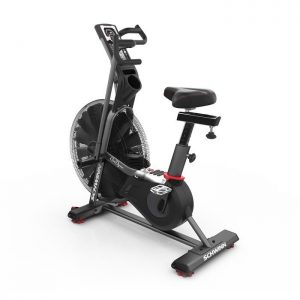
Credit: www.ptprogress.com
Exercise Machines to Avoid After Hip Replacement
Millions of people around the world experience hip replacement surgery, and it can be a life-changing event. After surgery, however, you will need to take extra care in selecting the right exercises and equipment that won’t cause further harm to your new joint. While exercise is essential for recovery after a hip replacement, there are certain machines that could do more harm than good.
In this blog post, we’re going to discuss which types of exercise machines should be avoided after a hip replacement procedure. First off, any type of machine or activity that places too much pressure on your newly replaced joint should absolutely be avoided. This includes stair climbers and elliptical machines as well as running on hard surfaces like pavement or concrete – all of these activities put an excessive amount of stress on your hips when done improperly.
Additionally, if you have just had a total hip arthroplasty (THA) then avoid using high-resistance weight machines such as leg presses or even seated chest presses because they require large amounts of strength from the affected area which can lead to further injury due to instability in the joint area caused by recent surgery.
Best Exercise After Hip Replacement
If you’ve recently undergone hip replacement surgery, then you know the importance of proper recovery and rehabilitation. Exercise is one of the most important elements of your rehabilitation plan – it helps to strengthen muscles, improve mobility and flexibility, reduce pain and swelling, and help speed up your recovery process. The best exercises after hip replacement depend on a variety of factors such as age, fitness level, medical history, and overall goals for recovery.
Generally speaking, though there are some basic exercises that can be beneficial for all patients undergoing hip replacement surgery: 1) Range-of-motion exercises: Range-of-motion (ROM) exercises help improve joint flexibility by gently stretching surrounding muscles while increasing circulation in the area. This helps to promote healing in the tissue around the new artificial joint.
These types of exercises should be done several times a day with assistance from a physical therapist or other healthcare professionals who specialize in postoperative care. Examples include leg lifts (marching), ankle pumps (pointing toes away from the body), knee bends (squats), bridge pose (lying on back with feet flat on the floor lifting hips off the ground), etc.
Lifelong Restrictions After Hip Replacement
Hip replacement is a major surgery that doctors use to treat degenerative diseases of the hip. It involves replacing damaged or diseased portions of the hip joint with artificial components, such as metal or ceramic parts. The procedure can offer great relief from pain and allow people to return to an active lifestyle.
However, there are some lifelong restrictions after hip replacement that patients need to be aware of in order to maintain their health and safety. In general, it’s important for people who have had a hip replacement not to overexert themselves physically. This means avoiding activities like running, jumping, heavy lifting, and contact sports – all of which could cause further damage or dislocation of the new joint.
Patients should also take care when engaging in other physical activities such as swimming and cycling; if there’s any discomfort during these activities they should stop immediately before more serious harm is caused. It’s important for post-hip replacement patients never to bend their hips past 90 degrees when standing up straight, so they don’t put too much pressure on the new joint; this includes things like reaching down into cupboards and picking up items off the floor (using correct posture).
Conclusion
If you’re looking for the best exercise equipment after a hip replacement, look no further! There are many great options available that can help you stay active and healthy while also taking care of your newly replaced hip. From stationary bikes to elliptical machines, there’s something out there that will work for everyone.
You’ll want to make sure you get the right size and type of machine so it fits your needs and preferences. Stationary bikes offer low-impact cardio workouts which can be beneficial for those with joint pain or stiffness. Ellipticals provide a full body workout without putting too much stress on the joints, making them ideal for post-surgery recovery.
Resistance bands are another great option as they allow users to target specific areas while still providing plenty of support. Finally, treadmills offer more complete exercise routines but should only be used by those who have been cleared by their doctor first. Whichever piece of equipment you choose, make sure it suits your physical abilities and goals so that you can get back into shape safely!

